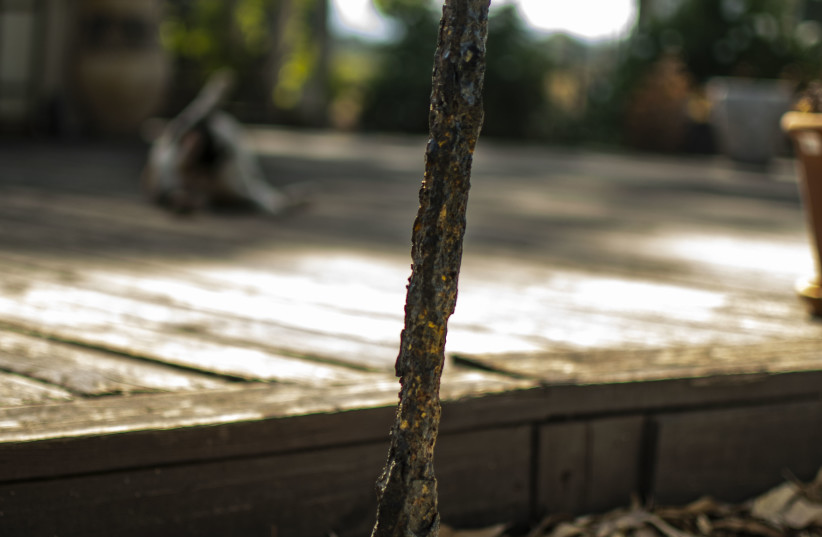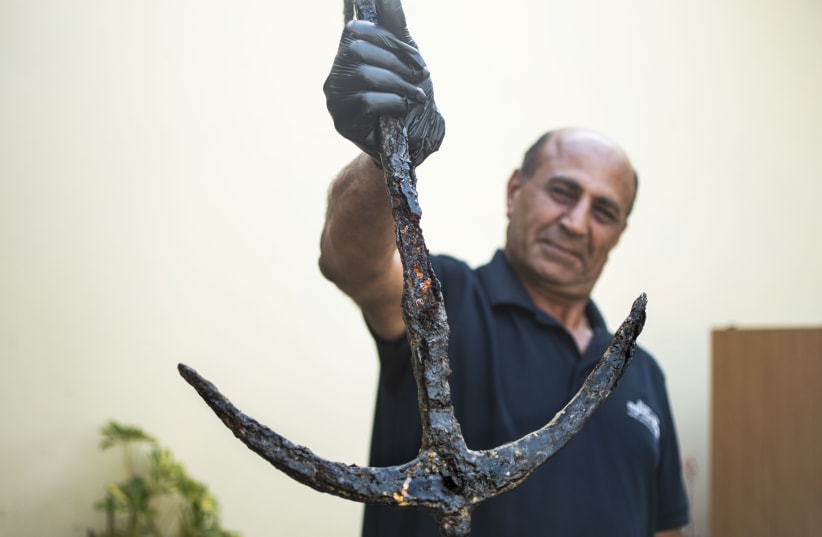A small anchor believed to be over 1,700 years old has been returned to the national treasury through the joint efforts of the Heritage Ministry and the Israel Antiquities Authority (IAA).
This anchor, a rare find in the country, was recovered by a citizen named Moshe during a diving expedition off Palmahim Beach in 1996.
Initially unsure of its significance due to its covering of marine encrustation, Moshe cleaned the anchor and soon realized its historical importance.
In response to the IAA's call on the Israeli public to return stolen or discovered artifacts, Moshe delivered the anchor to the IAA for examination, preservation and further study of its origin and significance.
The ongoing operation, set to continue until Thursday, urges citizens to voluntarily hand over ancient artifacts that they have in their possession to the IAA.

The primary objective of this initiative is to enhance public awareness regarding the value and importance of antiquities while allowing for the retrieval of valuable historical items held by the public.
Additionally, the operation may provide significant insights into the past through the careful study of these artifacts.
According to Kobi Sharvit, director of the Marine Archaeology Unit at the IAA, "This is a small anchor from the Roman period, which may have been used to moor a fishing boat."
"These anchors begin to appear in the first century BC, until the third century AD," he explained. "As a rule, we find ancient anchors in the sea, but in this case, it is an extremely small anchor, whose size and weight are absolutely rare.
"It is not that there were not small anchors in ancient times, but that we have discovered few of them; It can be assumed that the reason for the small anchors that have not been discovered yet, is that when a small shop got into trouble at sea, the lightweight anchor could be pulled back to the ship so that it did not have to be abandoned on the spot."
"The Yavne-Yam anchorage, where - according to Moshe's report - the anchor was found, underwent upheavals during the Roman period," Sharvit explained further. "[The book] Hashmonaim 2 states that after Judah the Maccabee learned that the residents of Yavneh were plotting to sink the ships of their Jewish neighbors, he and his army raided the anchorage and set fire to all the ships docked there."
Expressing gratitude to Moshe for his responsible actions, Sharvit acknowledged that his unique discovery provides valuable insights into maritime activities during the Roman era in Israel. However, the cleaning process performed on the anchor using modern materials has affected its preservation.
Notifying the IAA is the best way to preserve artifacts
The IAA aims to stabilize its condition and emphasizes the importance of reporting ancient findings immediately. When encountering artifacts in marine environments, it is crucial to leave them in place, document their location coordinates and notify the Antiquities Authority.
Removing artifacts without proper documentation leads to the loss of valuable contextual information about the archaeological site.
"The antiquities return operation led by the Ministry of Heritage and the Antiquities Authority is important and significant," Heritage Minister Amichai Eliyahu said. "The antiquities that will be returned will help in assembling the historical story of the Land of Israel. I call on the general public who keep any antiquities in their homes to return them to the IAA, which holds them under sealed preservation conditions. Some of the antiquities will be presented to the public in various exhibitions in museums."
"Many people inherited and keep at home items that their parents collected because in the past, the law did not prohibit this," explains Eli Escozido, director of the IAA.
"Other people find antiquities at tourist sites and don't know that it is necessary to report the historical treasures, which belong to the general public. The campaign asks for the citizens' cooperation in returning the antiquities to their natural and legal place of our heritage assets. With us... the sensitive items will be documented and preserved against the ravages of time. Some of them will go to the displays, and maybe even add information about the country's past. We are very curious to find out what will come our way," Escozido added.
